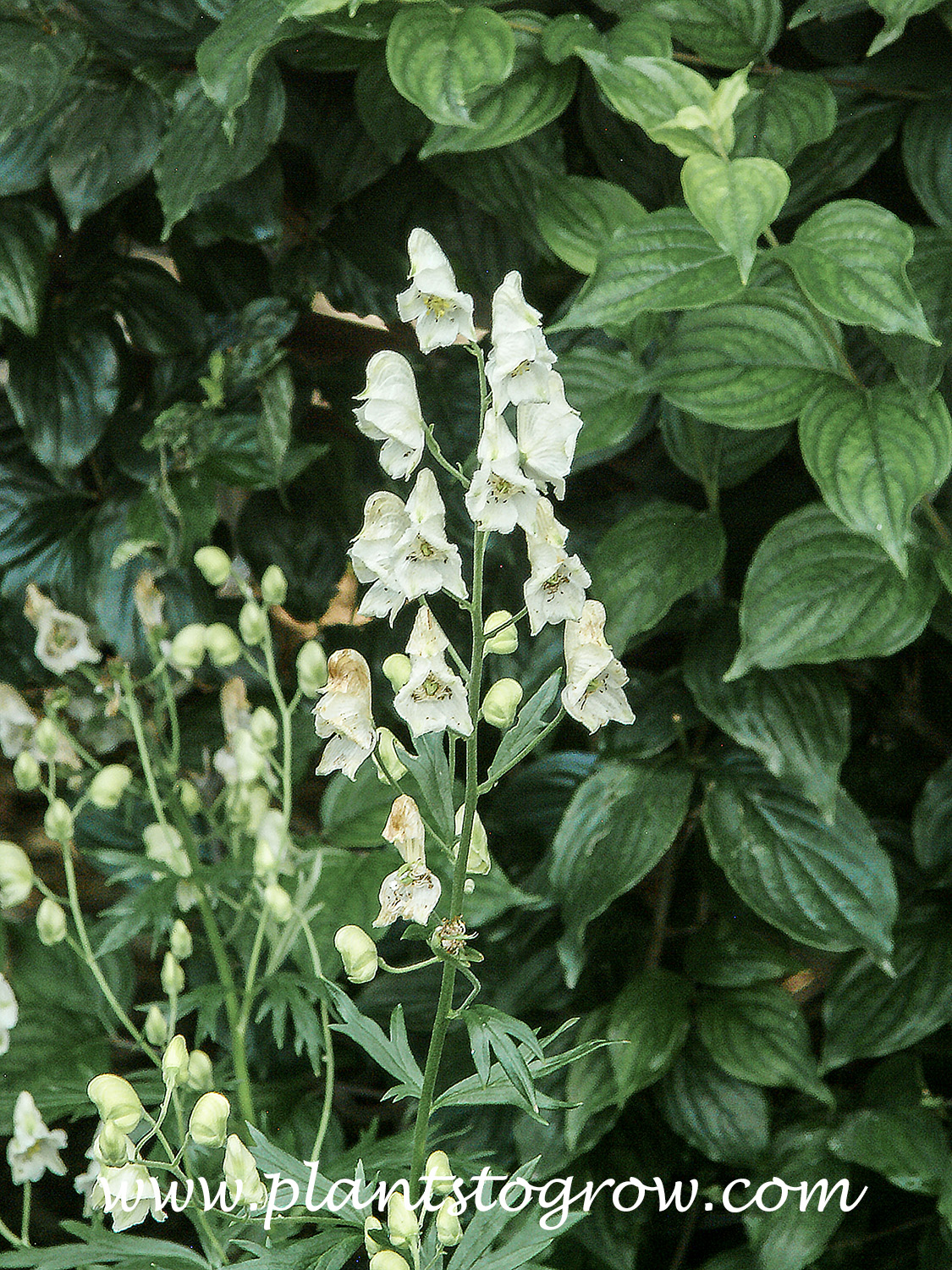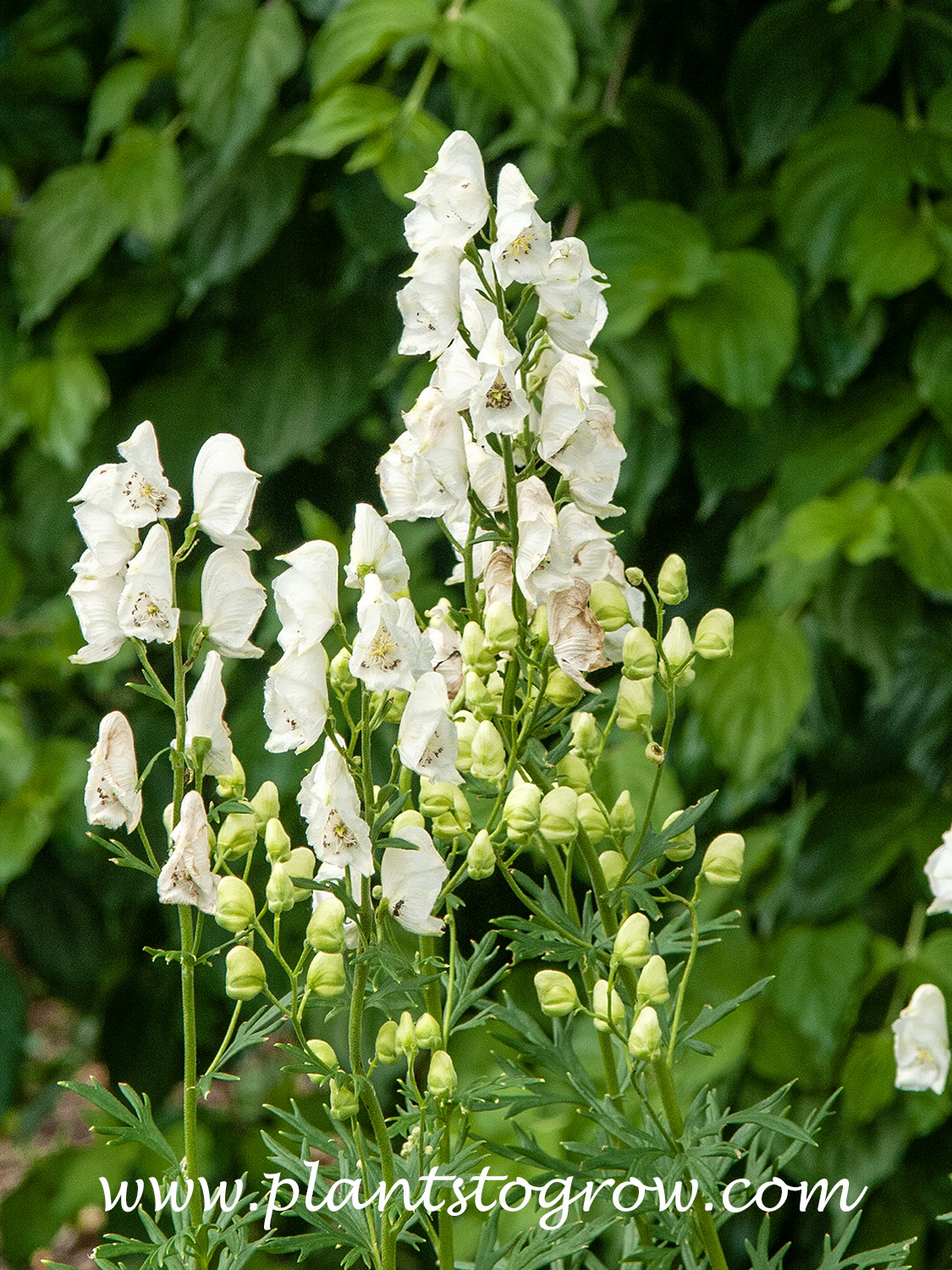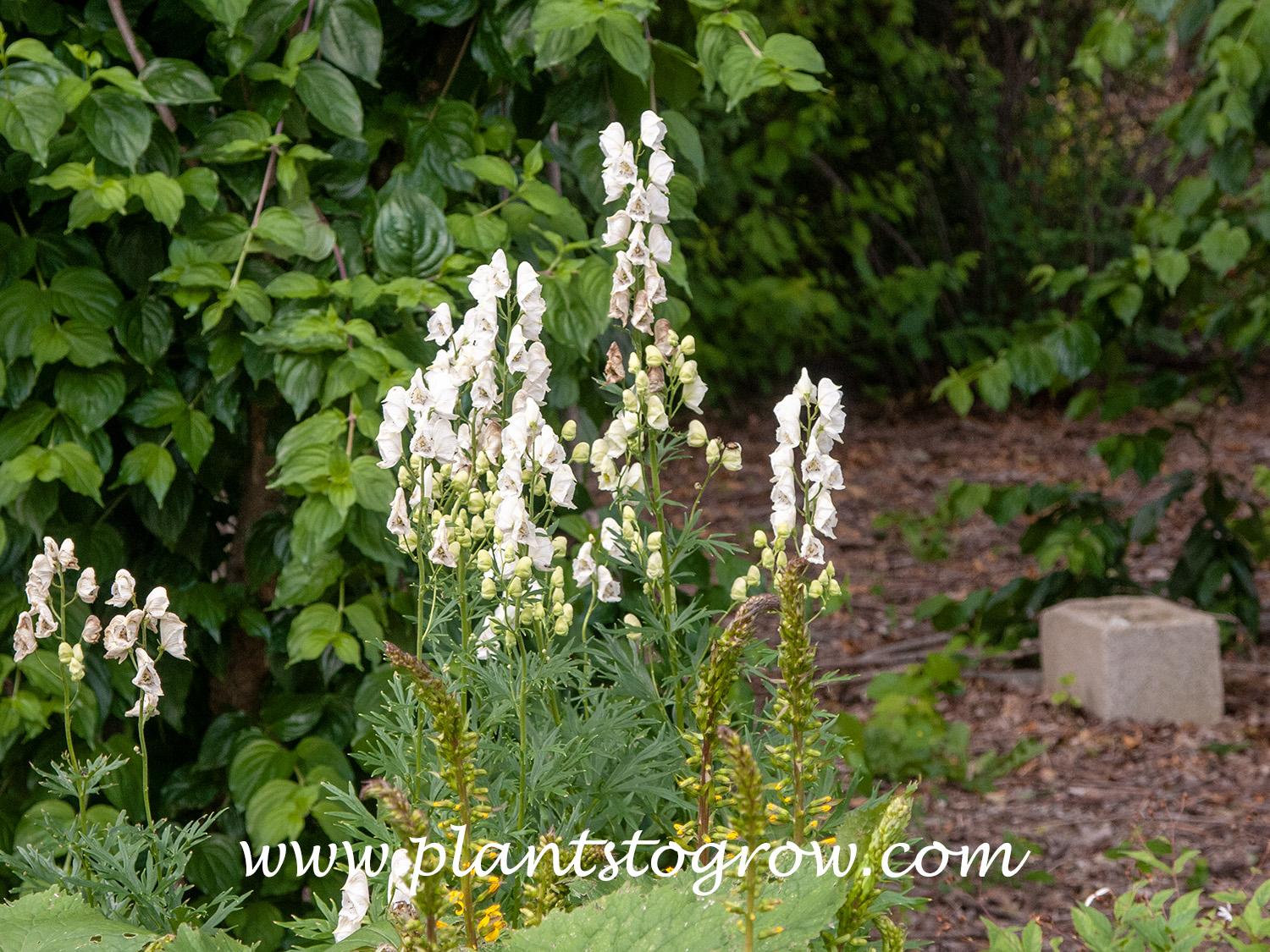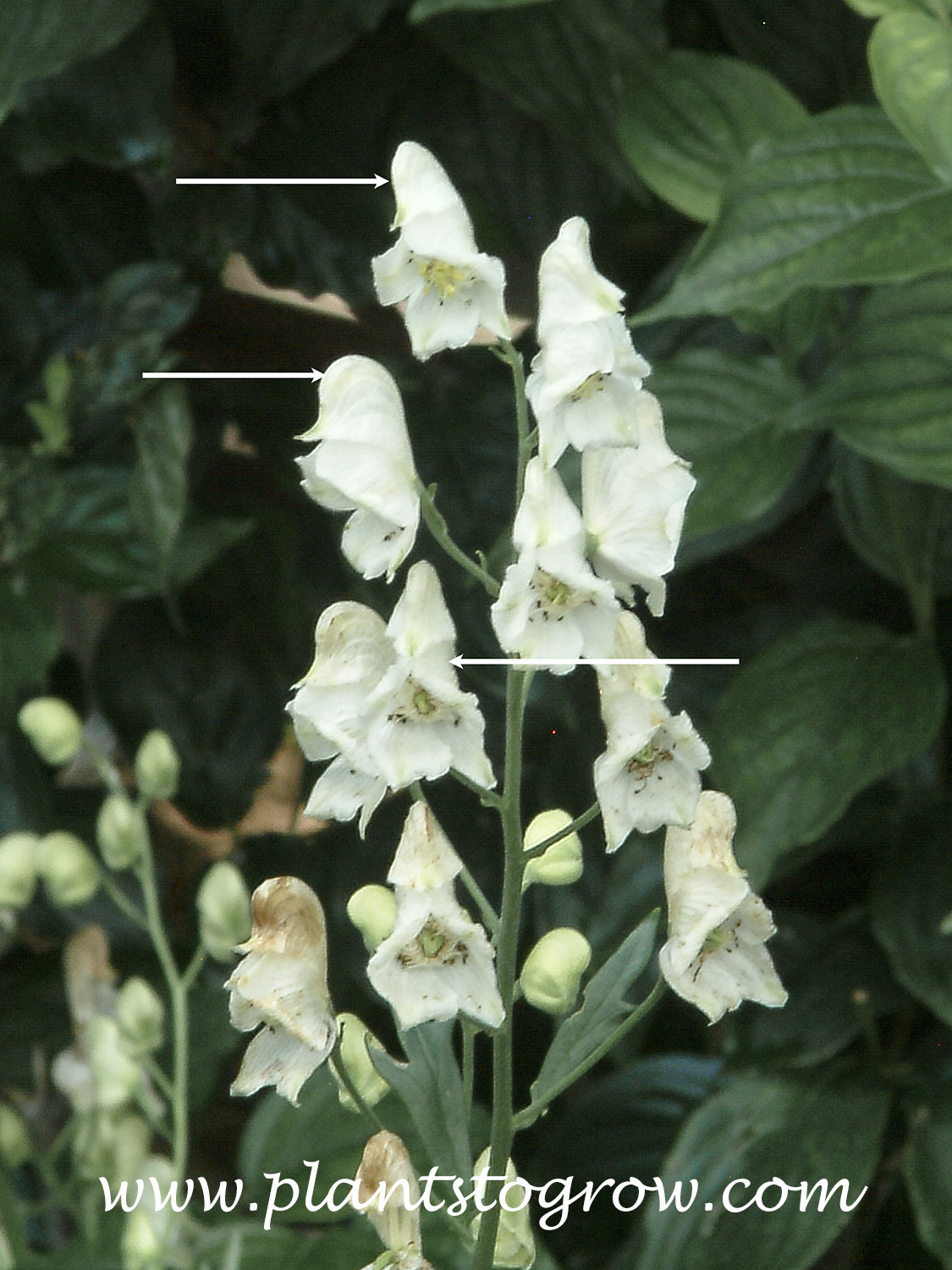| Description | White Monkshood (Aconitum napellus album) is a white blooming form of the Common Monkshood. |
|---|---|
| Pronunciation | (ak-CO-nie-tum)(na-PEL-lus) |
| Plant Type | Perennials Hardy |
| Hardiness Zone | 3 |
| Sunlight | Prefers partial sun, tolerates full if the soil is moist |
| Moisture | average to moist, avoid dry |
| Soil & Site | prefers moist with abundant organic matter |
| Flowers | The white flower is covered with a small helmet or hood (galea) with a beaked front; It is an inflorescence called a raceme. |
| Fruit | The fruit is an aggregate of follicles with many seeds. |
| Leaves | palmately veined, deeply divided to the center |
| Stems | It has stiff, erect, unbranched, leafy stems, and taller stems may need to be staked. |
| Dimensions | 2-3 to 4 feet tall in optimum conditions, vertical upright form |
| Maintenance | It is slow to recover from division, so it's best left in place. It may need staking. Remember to wash all equipment and hands after working with the plant. It can be cut back to control height, but this will mean the loss of the larger terminal buds. Wear gloves when handling this plant. |
| Propagation | slow from seed, division |
| Native Site | It is native to Europe. |
| Misc Facts | This is a very toxic plant. Ingestion of or even touching the sap can cause cardiac or respiratory failure. The leaves and roots contain aconitine, a narcotic alkaloid. Wash hands after handling this plant. |
| Notes & Reference | #40-Manual of Herbaceous Plants (Steven Stills), #54-The Well Tended Garden (DiSabato-Aust), #79-Perennials For Every Purpose (Larry Hodgson), #275-North Carolina Botanical Garden ((https://plants.ces.ncsu.edu/plants/) |

Cart




